Jaguar cichlid - Parachromis managuensis
Scientific name: Parachromis managuensis
Common name: Jaguar cichlid
Family: Cichlidae
Usual size in fish tanks: 35 - 55 cm (13.78 - 21.65 inch)
014
Recommended pH range: 7 - 8.7
Recommended water hardness: 10 - 15°N (178.57 - 267.86ppm)
0°C 32°F30°C 86°F
Recommended temperature range: 25 - 30 °C (77 - 86°F)
The way how these fish reproduce: Spawning
Where the species comes from: Central America
Temperament to its own species: aggressive/territorial
Temperament toward other fish species: aggressive to smaller
Usual place in the tank: Middle levels
Food and Feeding
Jaguar Cichlids are carnivorous fish that require a protein-rich diet to thrive. High-quality cichlid pellets are an excellent staple food for them, as these pellets are specifically designed to meet the nutritional needs of large, predatory cichlids. Additionally, supplementing their diet with foods such as krill, earthworms, and shrimp can help promote their natural hunting instincts and provide essential nutrients. These foods also enhance their vibrant coloration and overall health.
It’s important to avoid feeding Jaguar Cichlids live feeder fish. Although live food can seem like a natural choice for such a predatory species, feeder fish often carry parasites and diseases that can be transmitted to your Jaguar Cichlid. Instead, stick to frozen or dried meaty foods that are safe and nutritionally balanced. A varied diet that includes both pellets and live food alternatives will help keep your Jaguar Cichlid healthy and energetic.
Origin
The Jaguar Cichlid is native to the freshwater rivers and lakes of Central America, specifically in Costa Rica and Nicaragua. In the wild, these fish inhabit warm, slow-moving waters with soft substrates and plenty of hiding spots. Their natural environment is rich in plant life, submerged wood, and rocky areas, which provide shelter and ambush points for hunting prey. Understanding their natural habitat can help aquarists create a tank environment that closely mimics these conditions, making the fish feel more secure and reducing stress.
Sexing
Sexing juvenile Jaguar Cichlids is difficult, as there are no obvious differences between males and females at a young age. However, as the fish mature, males begin to develop distinctive physical traits. Adult male Jaguar Cichlids typically grow larger than females and develop a striking golden body color covered with black, jaguar-like spots. Males also have longer and more pointed dorsal and anal fins, while females tend to be more rounded and less vibrant in color.
Breeding
Jaguar Cichlids are known to be prolific breeders once they reach sexual maturity. To encourage breeding, it’s important to provide flat surfaces such as rocks or broad-leaved plants in the aquarium for the female to lay her eggs. They will also use the glass of the tank if no other suitable surface is available. Once the eggs are laid, the female will guard and tend to the eggs, while the male takes on the role of defending the territory from intruders. Jaguar Cichlids are highly protective parents, and their aggression levels may increase significantly during this time.
The eggs typically hatch within 3 to 5 days, depending on the water temperature. After hatching, the fry will become free-swimming within a few more days. At this stage, you can begin feeding them with crushed flake food or newly hatched brine shrimp to support their growth. Regular water changes and maintaining optimal water conditions are essential to ensuring the fry's survival.
Lifespan
With proper care, Jaguar Cichlids can live up to 15 years or more in captivity. Providing a well-maintained, spacious environment with clean water and a balanced diet will significantly contribute to their longevity. Regular health checks and monitoring water quality are crucial for ensuring a long, healthy life for your Jaguar Cichlid.
Short Description
The Jaguar Cichlid is a large and powerful predator that requires a substantial tank size to accommodate its active nature and territorial behavior. A minimum tank size of 125 gallons (475 liters) is recommended for a single adult, with larger tanks needed if you plan to keep multiple cichlids. Open swimming spaces are essential for this species, as they are highly active and need plenty of room to roam.
If you’re housing more than one Jaguar Cichlid or other large cichlids, ensure the tank has plenty of hiding spots and barriers to help reduce aggression. Jaguar Cichlids can be aggressive toward other fish, especially during breeding periods, so tank mates should be chosen carefully. Other large, robust cichlids or similarly sized fish are the best options for companions. However, if you have a breeding pair, it’s advisable to keep them in a separate tank to minimize conflicts with other fish.
Pictures
Bought by aqua-fish.net from jjphoto.dk. One picture was provided by our contributor.








 Thread-finned
Thread-finned 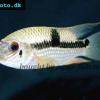 Acara
Acara  Yellow
Yellow  Patrick's
Patrick's  Blue
Blue  Green
Green 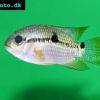 Acara
Acara  White
White  Compressed
Compressed 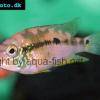 Pastel
Pastel  Midas
Midas  Red
Red  Bluemouth
Bluemouth  False
False 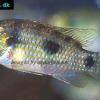 African
African  Agassiz's
Agassiz's  Banded
Banded 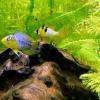 Yellow
Yellow  Cockatoo
Cockatoo  Blue
Blue  Blackstripe
Blackstripe  Highfin
Highfin  Redstripe
Redstripe  Threadfinned
Threadfinned  Macmaster’s
Macmaster’s 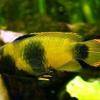 Panda
Panda  Norbert’s
Norbert’s 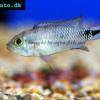 Blue
Blue  Thin-line
Thin-line  Three-striped
Three-striped  Viejita
Viejita 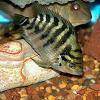 Flier
Flier  Archocentrus
Archocentrus  Convict
Convict  Seven
Seven  Spiny
Spiny  Oscar
Oscar  Sunshine
Sunshine  Chitande
Chitande  Firebird
Firebird  Midnight
Midnight  Lake
Lake  Sunshine
Sunshine  Aulonocara
Aulonocara  Nyasa
Nyasa 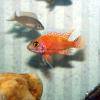 Ruby
Ruby  Grants
Grants  Aulonocranus
Aulonocranus  Chameleon
Chameleon  Benitochromis
Benitochromis  Orinoco
Orinoco  Yellow
Yellow 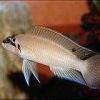 Brichard’s
Brichard’s  Guenther’s
Guenther’s  Southern
Southern  Cichla
Cichla 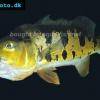 Peacock
Peacock  Chiseltooth
Chiseltooth  Bolivian
Bolivian  Red
Red  Many-pointed
Many-pointed  Jack
Jack  Red
Red  Three
Three 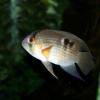 Keyhole
Keyhole  Azureus
Azureus  Red
Red  Jackson’s
Jackson’s  Crenicichla
Crenicichla  Honduran
Honduran  Blue-eye
Blue-eye  Afra
Afra 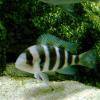 Frontosa
Frontosa  Slender
Slender  Malawi
Malawi  Chequerboard
Chequerboard  Checkerboard
Checkerboard  Malawi
Malawi  Ectodus
Ectodus  Tanganyika
Tanganyika  Canara
Canara  Green
Green  Rostratus
Rostratus  Pearl
Pearl 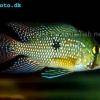 Geophagus
Geophagus  Yellowhump
Yellowhump  Suriname
Suriname  Redhump
Redhump  Red
Red  Dority’s
Dority’s  Argentine
Argentine 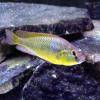 Burton’s
Burton’s  Victoria
Victoria 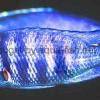 Haplochromis
Haplochromis  Jewel
Jewel  Banded
Banded 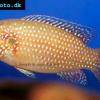 Lifalili
Lifalili  Lowland
Lowland  Texas
Texas  Pantano
Pantano  Severum
Severum  Banded
Banded 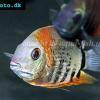 Severum
Severum  Rainbow
Rainbow  Parrot
Parrot  Chocolate
Chocolate  Brown
Brown  Marlieri
Marlieri  Golden
Golden  Striped
Striped  Masked
Masked 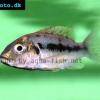 Konye
Konye  Blue
Blue  Trewavas
Trewavas  Electric
Electric  Dwarf
Dwarf  Redbreast
Redbreast  Lamprologus
Lamprologus  Gold
Gold 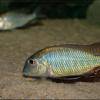 Greenface
Greenface 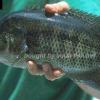 Mayan
Mayan  Aurora
Aurora  Blue
Blue  William’s
William’s 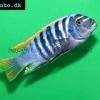 Zebra
Zebra  Malawi
Malawi  Blue
Blue 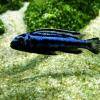 Blue
Blue  Mbuna
Mbuna  Parallel
Parallel  Purple
Purple  Flag
Flag  Bolivian
Bolivian  Ram
Ram  Basket
Basket 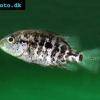 Haitian
Haitian  Zebra
Zebra  Striped
Striped  Neolamprologus
Neolamprologus  Brevis
Brevis  Fairy
Fairy 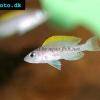 Neolamprologus
Neolamprologus  Cylindricus
Cylindricus  Hecq’s
Hecq’s  Neolamprologus
Neolamprologus  Lemon
Lemon  Mustax
Mustax  Daffodil
Daffodil  Six-bar
Six-bar  Five-bar
Five-bar  Marbled
Marbled 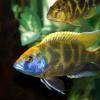 Giraffe
Giraffe  Blue
Blue  Sulphurhead
Sulphurhead  Wolf
Wolf  Blue
Blue  Marakeli
Marakeli  Madagascar
Madagascar  Pinstripe
Pinstripe  Pelmatochromis
Pelmatochromis  Kribensis
Kribensis 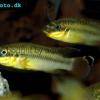 Striped
Striped  Red
Red  Deepwater
Deepwater  Fenestratus
Fenestratus  Nichols’
Nichols’  Southern
Southern  Bumble
Bumble  Demason’s
Demason’s  Slender
Slender  Red
Red  Mbuna
Mbuna  Malawi
Malawi  Kenyi
Kenyi  Powder
Powder  Altum
Altum  Angelfish
Angelfish  Angelfish
Angelfish 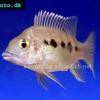 East
East  Juba
Juba  Earth
Earth 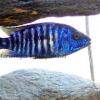 Electric
Electric  Azure
Azure 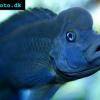 Lionhead
Lionhead  Discus
Discus  Blue
Blue  Red
Red  Zebra
Zebra  Brichard’s
Brichard’s  Blue
Blue  Firemouth
Firemouth  Zebra
Zebra  Yellow
Yellow  Blue
Blue  Dwarf
Dwarf  Blunthead
Blunthead 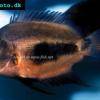 The
The  White
White  Twoband
Twoband  Fenestratus
Fenestratus  Window
Window  Tailbar
Tailbar  Black
Black  Redhead
Redhead 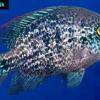 Oaxaca
Oaxaca  Xenotilapia
Xenotilapia